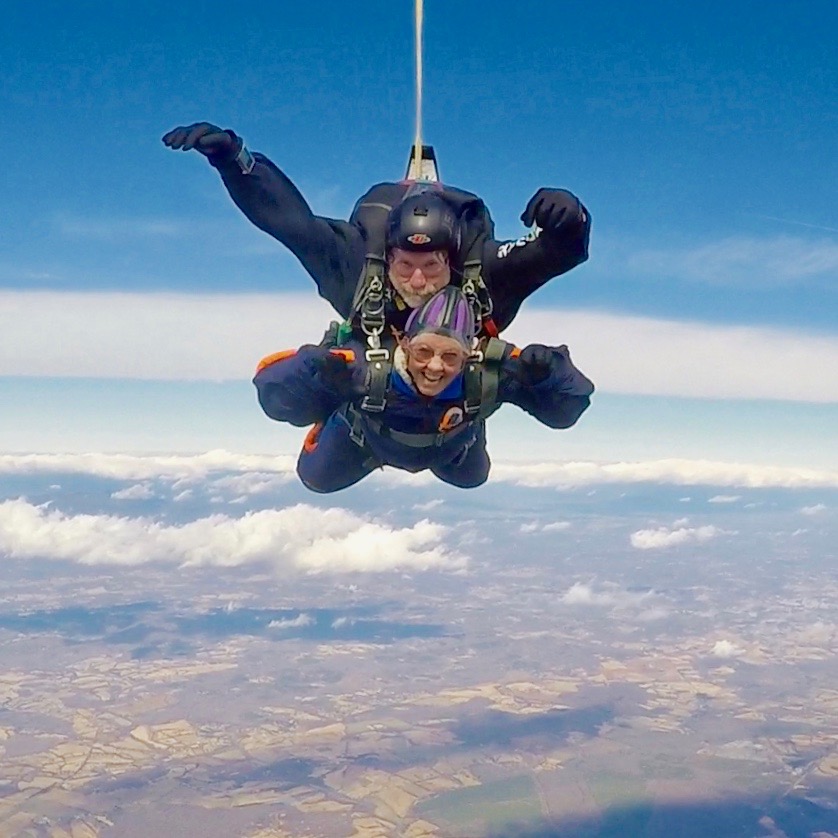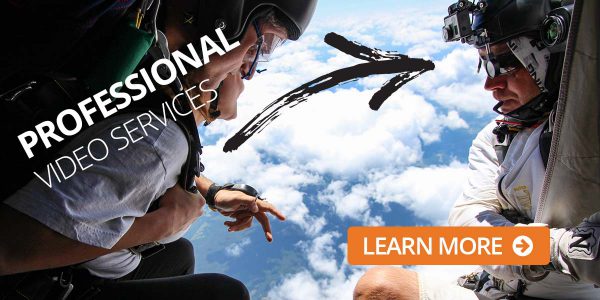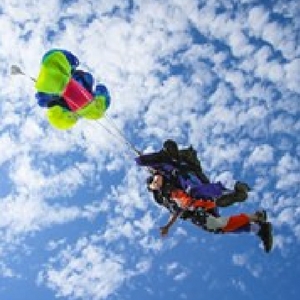
3 Phases of Skydiving: Freefall, Parachute and Landing
Wednesday, August 7, 2024
- Skydive Orange
- 8/07/24
- 0
- General
Skydiving includes three specific phases, each carrying its unique components to add to an overall thrilling experience. It combines the adrenaline rush of freefall with the serenity of a breathtaking parachute ride back down to the ground and the satisfyingly smooth parachute landing.
Understanding the significance of each distinct stage of skydiving – freefall, parachute deployment, and landing – helps you appreciate all the beautiful layers of a skydive. It also helps prepare you for the skydiving process, gives you insight on how skydiving is done step-by-step, and fills you in on what to expect during your jump at each phase. So, let’s get into it!
Phase 1: Freefall
What is Freefall?
Freefall is the stage of skydiving where you will experience the exciting sensations of weightlessness as you fall through the sky at 120 mph. Freefall begins the moment you exit the plane and concludes as the parachute is deployed.
The Freefall Experience
During freefall, you’ll feel the wind rush over your body as if you’re being submerged in it – like getting a big hug from the sky and giving you a sense of floating. If you’ve ever stuck your hand out of the car window while going 60 mph, it feels like that all over your whole body … times two! The initial leap from the airplane brings a surge of adrenaline, followed by an exhilarating feeling of pure freedom. As soon as you exit, all of your fear disappears within a split second and is replaced with a mix of excitement, accomplishment, and awe!
How Long Is Freefall?
The typical duration of freefall can be anywhere from 30 to 60 seconds depending on the altitude you exit from. Most jumps occur anywhere from 8,000 to 14,000 ft, with freefall speeds reaching up to 120 mph. At Skydive Orange, we jump from 13,500 ft which gives you about 45 seconds of fantastic freefall!
Freefall Safety Measures
Safety in freefall is paramount and relies upon the specialized equipment and the presence of one of our certified instructors. Freefall-specific gear on a tandem skydive would be the drogue – or tiny parachute that is deployed as soon as you reach terminal velocity after exit – which helps counteract the increased weight of two skydivers and slows you down enough to have a comfortable parachute deployment.
Another important tool during freefall is the altimeter (the watch-looking thing that skydivers wear on their wrists), which uses barometric pressure to measure altitude. Goggles and an optional jumpsuit are also important pieces to help protect your eyes and skin from debris and the harsh winds you may experience during freefall.
Phase 2: Parachute Deployment
What is Parachute Deployment?
Parachute deployment is the process of releasing and inflating the parachute to transition from freefall to a controlled descent. This critical phase slows everything down, making the descent more manageable for a soft, cushy landing!
Parachute Opening Timing and Technique
When it is time, your instructor will deploy the parachute. You may be wondering, “How do skydivers know when to open the parachute?” Well… Do you remember the altimeter? Yep, the instructor will keep an eye on the altimeter to see what altitude they’re at and pull the parachute at a certain altitude (usually around 5,500 ft) to give you enough space and time to operate the parachute properly, ensuring a smooth landing.
What Does the Parachute Deployment Feel Like?
The transition from freefall to canopy flight is marked by a sudden deceleration as the parachute inflates. The shift brings a much quieter, more serene phase of the jump where you get to communicate with your instructor and tell them how epic the freefall was!
Parachute Safety Measures
You may or may not know that there are two parachutes within the skydiving parachute system; the main parachute and the reserve parachute. The main parachute is used during the initial deployment, while the reserve parachute serves only as a backup in case the main parachute malfunctions. The reserve parachute is heavily regulated, inspected, and repacked every 180 days by an FAA-certified parachute rigger to ensure proper function in the case that the skydiver needs to use it.
Additionally, an Automatic Activation Device (AAD) is implanted within the parachute system and is used to initiate the reserve parachute deployment sequence should the skydiver fail to deploy the main parachute before a certain altitude at a certain speed for whatever reason. Certified skydivers train and practice emergency procedures to handle main parachute malfunctions, ensuring that safety is prioritized throughout the jump.
Phase 3: Canopy Flight and Landing
What is Canopy Flight?
Canopy flight refers to the period after parachute deployment when you will float underneath the parachute. This phase of skydiving allows for controlled navigation and a gradual approach to the skydiving landing area.
How to Operate the Parachute
The parachute is operated by using toggles attached to lines, attached to the canopy to manipulate its shape and induce certain turns. Gentle turns and adjustments are used to line up the landing process.
The Landing Process
When it comes time to land the parachute back at the dropzone, your instructor will guide you on what to do as you approach the ground. You might hear your instructor tell you to lift your legs, which does require a bit of core strength. Most landings happen with a slide-in on your bottom, but they can also be stood up – it all depends on your instructor and the conditions at that time.
The Canopy Flight and Landing Experience
Canopy flight allows you to enjoy the view and maybe even get a chance to steer the parachute yourself! It is the cherry on top of a mind-blowing freefall experience. This gives you a chance to appreciate the beauty of our planet and soak in the moment of floating above the Earth in all of its glory! You’ll experience an overwhelming sense of relief and accomplishment as soon as you land back on solid ground. Many describe their feeling as pure ecstasy!
Landing Safety Measures
Safety during landing is enhanced by preparing the landing area, clearing it of debris/hazards, and having the guidance of your instructor. The instructor will use the toggles to slow your parachute down to almost a complete stop just before reaching the ground to ensure a soft landing.
Each phase of skydiving offers its unique sensation and thrill, making skydiving a life-changing experience that pushes the boundaries of possibilities and provides a sense of empowerment like no other. If you’re ready to take the leap, Skydive Orange is here to guide you every step of the way. Our experienced instructors, state-of-the-art equipment, and commitment to safety ensure you’ll have an unforgettable experience. Book your tandem skydive with us today! Blue skies.
The largest tandem skydiving center near Northern Virginia, Washington D.C. and Maryland.
Copyright © 2025, Skydive Orange, All Rights Reserved.
DropZone Web Design & Marketing by Beyond Marketing, LLC




